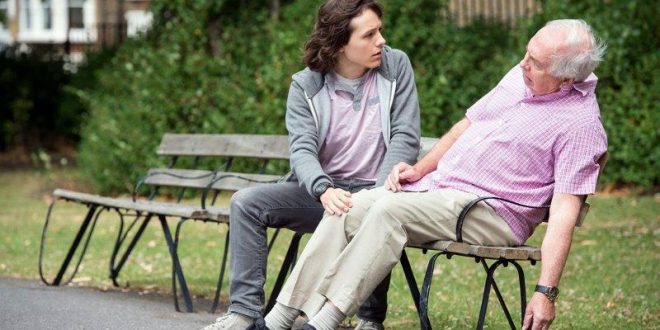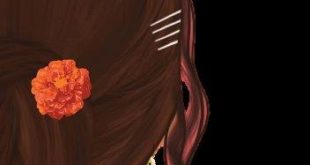The South Asian community is at a higher risk of suffering with stroke. But lack of awareness makes it difficult for people to even detect when the stroke strikes. Read to know what you can do to save your loved ones
By Surbhi Gogia
Dr. Preet Chahal is an attending Neurologist at the Royal Columbian Hospital and is a part of the Acute Stroke Team there. His specialty lies in attending to patients with potential strokes in an emergency room and provide appropriate stroke treatment. Although Dr. Chahal has also been involved with other facets of practicing Neurology including medical education and administrative work at the hospital, he finds providing stroke care to be extremely rewarding and really is “close to his heart.” With his years of experience managing stroke patients and their families, Dr. Chahal has observed that there is limited awareness around this condition in the South Asian community. He feels that there is an urgent need for each one of us to understand what Stroke is and how to recognize its common symptoms so that it we can deal with appropriately. In an interview with Desi Today, he talks about how timely intervention can prevent your loved ones suffering from serious stroke outcomes.
- DT) Have you seen an increase in the number of stroke cases amongst South Asians?
South Asians have a two-fold higher risk of diabetes and are three times more likely to have high blood pressure than Caucasian people. Both of these conditions are risk factors for a stroke, therefore, people of South Asian background are more at the risk of suffering with stroke conditions.

This makes it extremely important for us to spread more awareness about stroke within the community.
- DT) What is the level of awareness about stroke and its symptoms in the community?
There have been campaigns spreading awareness about signs of a stroke including the FAST campaign by the Heart and Stroke Foundations of Canada (HSFC).
In my experience, there is limited awareness about signs of stroke amongst the South Asian Community. We need to start with the basics and raise the level of awareness about what STROKE actually means and what are its common signs and symptoms.
- DT) So what is a stroke?
Simply put, Stroke happens when blood supply to any part of the brain gets blocked or disrupted and that part of the brain starts to die!
Broadly speaking, there are 2 types of strokes: One when the arteries supplying the blood to the brain are blocked and the other type is when the arteries burst open.
Almost 85% of the strokes occur due to blocked artery and only 15% are due to artery rupture.
It is estimated that during a stroke 1.9 million brain cells die every minute therefore the faster one seeks urgent medical attention by calling 911, the better their chances of minimizing the level of disability.
Time is Brain.
The simplest way to understand the difference between a Stroke and a Heart attack — a stroke is the “attack of the brain” and heart attack is the “attack of the heart” (Dil da daura).
- DT) What are some of the major signs that the person getting a stroke or the people around the person can notice to respond quickly and get timely help?
The stroke awareness campaign of HSFC is based on the acronym F(ace) A(rms) S(peech) T(ime). The first is when someone’s Face is drooping, can you raise your Arms and does your arm drift downwards, slurring of the Speech or difficulty expressing. There are multiple other signs but these are the common signs that can indicate a stroke easily.
- DT) These are the instant signs that can tell a person is potentially getting a stroke. Are there any early symptoms too that can warn the person or family members about a possible stroke?
Unlike warning signs of heart attack where you can feel chest pain or have difficulty breathing, there are no early warning signs of a stroke that will lead you to react in advance of the symptom onset.
Some people can experience stroke symptoms noted above that resolve spontaneously within seconds or minutes. These can be “mini–strokes” also known as Tansient Ischemic Attack (TIA).
These mini-strokes/TIA’s increase the risk of future stroke therefore its equally important to seek urgent medical attention by calling 911 even if your stroke symptoms resolve quickly.
- DT) So how should a person getting a stroke or people surrounding that person react?
The important advice is to Call 911 in order to seek urgent medical attention.
I recommend that people do not drive themselves or their loved ones with potential stroke symptoms to the hospital. Once you are thinking stroke your immediate response should be to call 911.
I also recommend bringing your current medication lists or medication bottles/packs with you so that we can quickly confirm what medications you are actively taking and minimize risk of potential side effects with the treatment.
- DT) What is the treatment process for the stroke?
As I mentioned earlier “time is brain” during stroke so our primary focus is how quickly can we open up the blockage and restore the blood supply to the brain.
There are two major approaches to this. One is clot busting/dissolving medication (tTPA). This medication is very time sensitive: it has to be given within 3 -4.5 hours from the onset of the stroke symptoms. Therefore it is paramount to react quickly when stroke symptoms appear and seek urgent medical attention by calling 911.
The other treatment is mechanical THROMBECTOMY (removing the clot) under which an interventionalist thread a wire to the blockage in the brain and attempts to pull the clot and clear the blockage and restore blood supply to the brain. This process is also very time sensitive and can be used with or without TPA treatment.
Therefore it is paramount to react quickly when stroke symptoms appear and seek urgent medical attention by calling 911.
- DT) How far is the recovery with these treatments?
If the blockage is successfully cleared in time, there can be a significant improvement in the outcomes.
We cannot undo the damage that has already been done to the brain. Those 1.9 million brain cells that die every minute during stroke cannot be revived. The goal of the treatment is to minimize the damage that occurs while blood flow is disrupted.
- DT) Do you think there is a stigma attached in the community to talk about stroke?
This is tricky. It is hard to differentiate whether it is stigma or shyness but people do not come forth to talk about their journey after the stroke. The more people talk about it in our community and spread awareness, they are helping others identify stokes and encouraging time to seek prompt medical treatment.
Stroke can be mistakenly understood as a terminal illness, where once you have a stroke, the life stops. But there is life after stroke. By encouraging the people to talk about it will help the community clearing this stigma.
- DT) What are some of the lifestyle choices that put a person higher at risk of a stroke?
The lifestyle risk factors of suffering stroke include unhealthy diet and lack of exercise. A healthy diet, regular exercise leading to better weight management, curbing alcohol consumption and smoking cessation can reduce your risk of not only strokes but heart disease too.
Perhaps questions could be How can one decrease their risk of stroke?
- healthy eating
- 30 minutes of daily exercise
- regular check ups to manage blood pressure, diabetes and cholesterol
- stop smoking
- weight loss
- DT) What is your message to the community?
. Understand what stroke is, recognize the signs and seek urgent medical attention. Every minute counts in stroke treatment
In regards to prevention, it is every patient’s responsibility to themselves to know what their risk factors and to work on minimizing them.
Another important message is for women. Women are at higher risk of strokes at key stages: pregnancy, after menopause and when elderly. We now know that more women are living with effects of stroke, have worse outcomes and face more challenges as they recover. More women die of stroke than men. Research has shown that young women take the longest median time to arrive at the hospital when having a stroke.
(Writer’s note: A close colleague of mine, whose family member recently suffered from a serious stroke. It was this friends visits to RCH and ICU unit, that made him realize how big the problem of stroke is in South Asians. And how little is the knowledge among our community about this serious condition. A lot of people do not even know what stroke means and what are its signs. A stroke happens when the blood supply to any part of the brain gets blocked and that part of the brain starts to die. The immediate signs are drooping of the face, weakness of the arm and slurring of speech. The faster you seek urgent medical attention by calling 9-1-1, the better chances of minimizing the level of disability. Eating healthy, exercising daily, managing your blood pressure, keep your diabetes and cholesterol in control, stop smoking, and manage your weight, will all help to decrease the chance of getting a stroke.
 Desi Today Magazine
Desi Today Magazine




